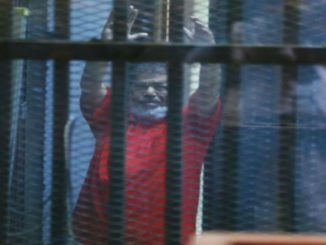
Despite its deteriorating economic conditions, Egypt ranked the second among developing nations for importing arms in 2015 – buying almost $12 billion worth of arms, according to a new US congressional report.
On the same list, Qatar ranked first for signing arms deals for more than $17 billion worth of weapons last year. Saudi Arabia ranked the third with over $8 billion in weapons purchases.
According to the report, titled “Conventional arms transfers to developing nations, 2008-2015.”, developing countries continued to be the biggest purchaser of arms in 2015.
In the same context, the report stated that the United States ranked first in global weapons sales last year, signing deals for about $40 billion, or half of all agreements in the worldwide arms bazaar, and France ranked as the second weapons dealer with $15 billion in sales.
The report,”Conventional Arms Transfers to Developing Nations 2008-2015″ was prepared by the nonpartisan Congressional Research Service, a division of the Library of Congress, and delivered to legislators.
The annual review is considered the most comprehensive assessment of global arms sales available in an unclassified form. The report adjusts for inflation, so the sales totals are comparable year to year.
Last June, IHS Inc., the leading global source of critical information and insight, released a report stating that Egypt is the world’s fourth-largest defense importers. Egypt’s spending on military imports reached US$2.268 billion in 2015, according to the report.
In the same context, the Stockholm International Peace Research Institute (SIPRI), an international think-tank based in Sweden that tracks arms based on production price rather than the price at the time of purchase, stated that the value of arms transfers to Egypt in 2015 reached $1.475bn, compared to $686m in 2010 and $368m in 2014.
Since Al-Sisi’s Military Rule, Egypt Accelerated Its Arms Deals
Egypt is the largest US military aid receptor after Israel with US$1.3 billion in annual military aid.
Moreover, Egypt has also made many crucial arms purchases from other countries, including Russia, France, and Germany since Abdel Fattah al-Sisi reached power by a military coup in 2013.
The Egyptian-French agreement in 2015 is the most high-profile deals to purchase 5.2 billion euros’ worth of military equipment, including 24 Rafale fighter jets and a naval frigate, and a contract with Russian firm Rosoboronexport to buy 46 attack helicopters.
Egypt’s entire defense budget is classified as a state secret and no details on defense spending are available.
Even basic information unrelated to defense is classified on the grounds of national security.
The defense budget estimated to be around $4.4 billion according to the Transparency International.
In the same context, industry intelligence firm BMI Research estimated defense spending at US$5.1 billion in 2015, predicting it would exceed US$5.4 billion in 2016 and US$6.5 billion in 2020.
Egypt Secured IMF Loan, Nearly the Same Amount of Money Spent for Finalizing Arms Deals
Egypt is passing through one of its harshest economic crises in its history.
Tourism and foreign investments, the two sources for foreign currency, have declined as a result of political instability and lack of security.
As a result, the Central Bank of Egypt (CBE) devalued the Egyptian currency last March.
The devaluation of the Egyptian pound and the shortage of foreign currency have flourished the black market on the currency expense and led to inflation. Inflation has reached its highest rate throughout 8 years -exceeding 19%.
In this context, Egypt tried to secure a loan from the International Monetary Fund(IMF). Accordingly, the Egyptian government has worked to fulfill the IMF economic reform program to secure the loan.
Last November, the International Monetary Fund’s executive board has approved Egypt’s request to secure $12 billion loan facility after Egypt met its requirements.
On August 30 Egypt started its first steps towards the loan when Egypt’s parliament approved a long-awaited law introducing a value-added tax (VAT) of 13 %, rising to 14% in the next fiscal year.
On November 3, the Central Bank of Egypt floated the Egyptian pound and gave up trying to peg the currency to the US dollar allowing it to devalue by almost half.
On November 4, Egypt took another unprecedented decision, which has always been abandoned by former leaders in fear of public unrest, to cut subsidies for fuel leading to jump in prices, in addition to the introduction of the value-added tax to raise revenues.
It is noteworthy that all Egypt’s presidents tend to avoid these economic measures of the IMF recalling poor Egyptians riot when President Anwar Sadat removed them on flour, rice, and oil in 1977, part of an effort to secure IMF-backed financing.
He reinstated later from the decision. Though Egypt has returned to the IMF virtually every decade since the 1970s, implementation of reforms has been mixed.
However, it seems that al-Sisi has decided to put the burden of the IMF loan on his own people, as he kept on calling them to endure hardship and austerity.
It is worth to mention that the amount of money spent on arms deals as mentioned in the new US congressional reports is nearly the same amount of the IMF loan with $12 billion.
However, Abdel Fattah al-Sisi chose to seek the IMF loan with all its negative repercussions on the Egyptian people instead of saving the money he spent on the arms deals.



